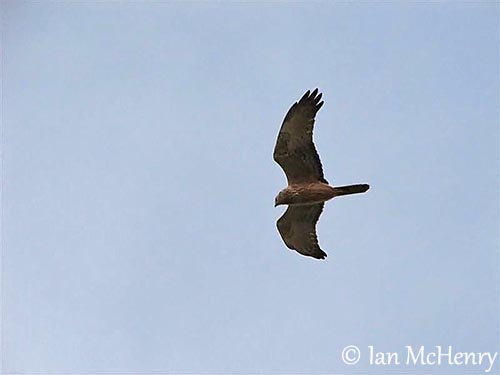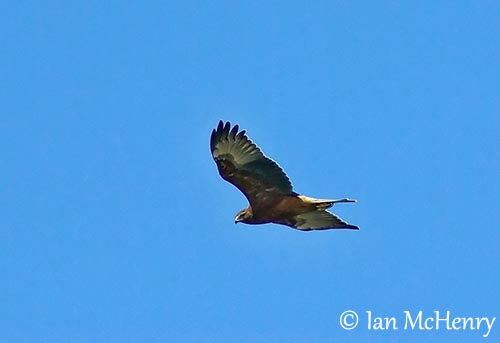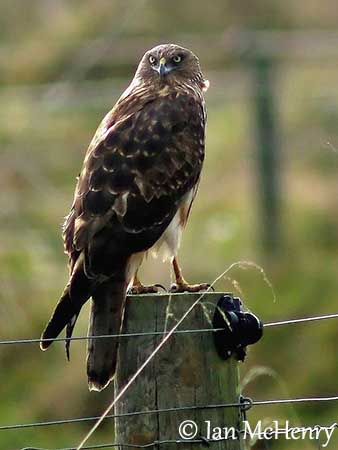
Fr: Busard de Gould
Maori: Kahu
Ang: Swamp Harrier - Australasian Harrier
All: Sumpfweihe
Esp: Aguilucho Lagunero del Pacífico
Ita: Albanella australiana
Nd: Pacifische Bruine Kiekendief
Sd: Australisk kärrhök
Photographers:
Ian McHenry
My New Zealand Birds
Simon Tan
PBase Bird galleries
Text by Nicole Bouglouan
Sources:
HANDBOOK OF THE BIRDS OF THE WORLD Vol 2 by Josep del Hoyo-Andrew Elliot-Jordi Sargatal - Lynx Edicions - ISBN: 8487334156
KNOW YOUR NEW ZEALAND BIRDS by Lynnette Moon - New Holland Publishers – ISBN: 1869660897
BirdLife International (BirdLife International)
New Zealand bird status between 2008 and 2012
Te Ara – The Encyclopedia of New Zealand
New Zealand birds and birding (Narena Olliver)
Birds in backyards (Birds Australia and Australian Museum)
WINGSPAN – National Bird of Prey Centre
Swamp Harrier or Australasian Harrier
Circus approximans
Accipitriformes Order – Accipitridae family
INTRODUCTION:
The Swamp Harrier is a typical “circus” species, formerly considered a race of the Western Marsh Harrier (Circus aeruginosus). They are very similar in behaviour, and may appear fairly similar in plumage in spite of different colours and pattern.
This raptor is often seen on exposed perch on the roadside. It feeds both on carrion and live preys, and it is known for its spectacular “sky-dancing displays”. This species is commonly seen gliding above its habitat throughout New Zealand, but it is native, not an endemic bird species.
DESCRIPTION OF THE BIRD:
Biometrics:
Length: 50-60 cm
Wingspan: 118-145 cm
Weight: M: 650 g – F: 850 g
The adult male has mainly dark brown upperparts with conspicuous white rump, well visible in flight. Wings and tail are dark brown with darker bars on flight feathers and rectrices.
On the underparts, the breast is creamy-white with brown streaks. Rest of underparts, including belly, vent and undertail-coverts are whitish. The underwing is creamy-white too with streaked coverts and barred brown flight feathers with dark tips.
On the brown head, we can see conspicuous facial disks giving this bird an owl-like face mask.
The strongly hooked bill is black with yellow cere. The eyes are yellow with pale yellow eyering. Legs and feet are pale yellow.

The female is larger than male. She is darker and browner, with more rufous underparts.
The adults become paler with the successive moults.
The juvenile has dark chocolate-brown plumage overall, with indistinct pale rufous rump. It has a whitish nuchal patch. The eyes are dark brown. Cere, eyering, legs and feet are pale yellow.
RANGE:
The Swamp Harrier occurs in S New Guinea, Melanesia, Australia, New Zealand and several islands of the Southern Pacific. It is only a breeding visitor in Tasmania.
In New Zealand, this raptor is present in a wider ecological niche than elsewhere in Australasia, and it occurs from the Kermadec Islands in the far North, to the cold subantarctic islands and the Chatham Islands.
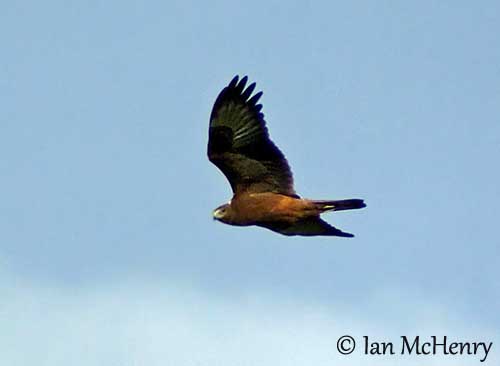
HABITAT:
The Swamp Harrier is a bird of the open country which enjoys an increasing habitat due to land clearance. It frequents pastures, forest edges, tussock land, fresh and salt wetlands and deep swamps with emergent vegetation and open water. It is commonly seen on roadsides. It can be seen from sea-level up to 1700 metres of elevation.
However, this species is less abundant over large patches of forest and in urban areas.
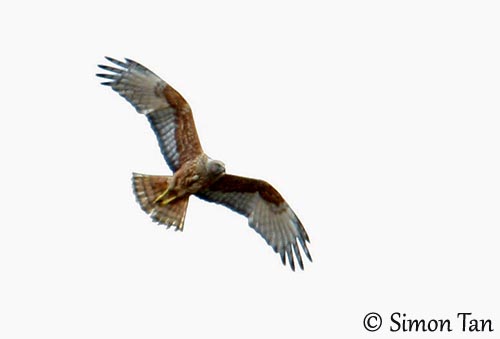
CALLS AND SONGS: SOUNDS BY XENO-CANTO
The Swamp Harrier is more vocal during the courtship displays. The “sky-dancing” display is accompanied by high-pitched, sharp “kee-a” or “kee-o”, and mewing sounds. This species is usually silent outside the breeding season.
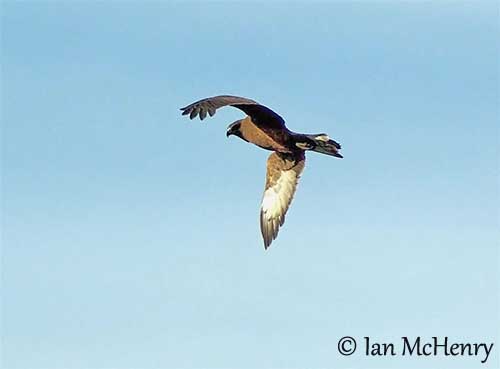
BEHAVIOUR IN THE WILD:
The Swamp Harrier uses a method of surprise to catch its preys. It hunts on the ground for birds and medium-sized mammals, insects and lizards. But it also wades in shallow water where it finds fish, frogs and tadpoles. It hunts by flying low over the ground with V-shaped wings. It also hunts from perch by dropping down onto the prey with legs outstretched and wings held back. It is able to kill rabbits, hares and rats. However, it also takes crickets and grasshoppers, and the eggs of the ground-nesting birds.
But the Swamp Harrier is also known for taking carrion. It scavenges road-killed animals, and can be seen near lamb carcasses or afterbirth.
It regularly regurgitates pellets of indigestible food items.
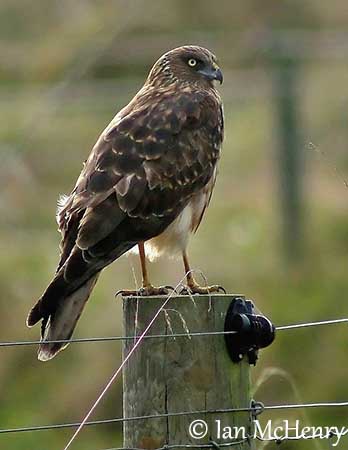
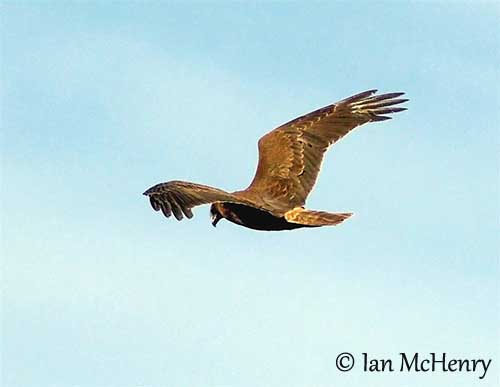
The prolonged breeding season starts in June and continues through October. The pair performs spectacular aerial displays called “sky-dancing”, usually in the vicinity or above the nest-site. They perform rocking dives and then, swoop back up in a large U-shaped loop.
The female may fly in zigzag, or the bird is also seen soaring and tumbling, making dramatic swoops while calling loudly.
They are mainly monogamous and solitary breeders. They are very secretive when nesting, with the nest hidden among tall, dense vegetation.
After breeding, they gather at nightime roosts in swamps, containing several hundreds birds on the ground.
The Swamp Harrier which breeds in Tasmania is migratory and leaves the island in winter.
The species is mainly resident at lower latitudes and it is sedentary on islands.
The migrating birds reach N Australia and New Guinea, but longest migrations have been sometimes reported, with birds reaching the New Zealand Subantarctic Islands.
The Swamp Harrier is known for its lazy flight, soaring and circling slowly above its habitat while searching for preys. The aerial courtship displays are spectacular and demonstrate the agility of this raptor. When the bird is gliding or soaring, the wings are held in shallow V-shape. The wing tips are upturned and the tail is outspread.
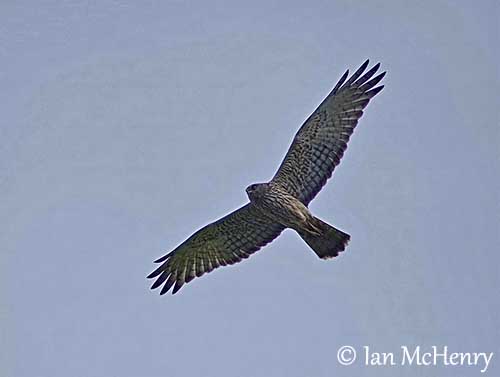
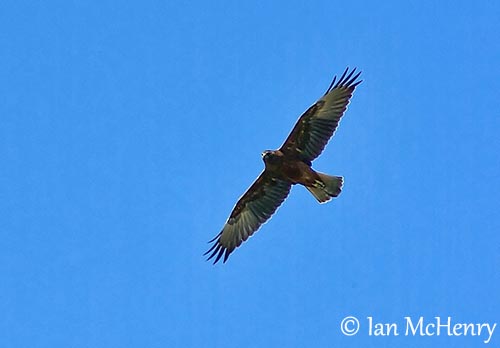
REPRODUCTION OF THIS SPECIES:
The laying occurs between October and December.
The nest is a platform made with rushes and grasses, and lined with feathers. The Swamp Harrier nests on the ground in swamps, scrub and tangled fern or wheat fields, among tall and dense vegetation. The female builds the nest on the ground, and occasionally in low trees.
She lays 3-5 white eggs, but usually, only two chicks survive. She incubates during 31-34 days, and she is fed by the male during this period. At hatching, the chicks have white down, black bill and pale pink cere, and dark eyes.
The male provides food to the female by passing the preys in aerial food-passes. It flies with the prey held in its talons. The female turns upside down while flying, and she takes the food with her talons from those of the male. Then, she feeds the chicks with small pieces of flesh.
The juveniles fledge 43-46 days after hatching, but they still depend on parents for 4-6 weeks.
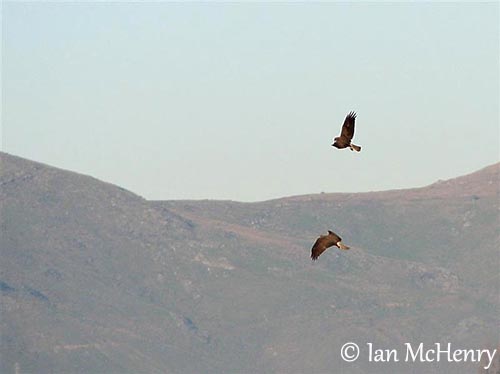
PROTECTION / THREATS / STATUS:
The Swamp Harrier is partially protected but the species is controlled at some sites where endangered bird species are living. And if the Swamp Harrier is a predator of some introduced species, it is also a predator for other birds and it takes poultry and game birds. It may occasionally kill new-born lambs too.
In spite of collisions with cars and wind turbines, the species is common and widespread throughout the range, with some local declines due to drainage of wetlands.
If disturbed while nesting, the adults will desert the nest-site because they are highly vulnerable to human disturbances.
The population is estimated to number in the tens of thousands and is suspected to be stable. This species has large range and is currently evaluated as Least Concern.
